After the flood in early November, large waves "cast sand", revealing the remains of an ancient ship that was discovered in the Thinh My coastal area, Hoi An Tay ward (Da Nang city).
Ancient ship reappears after storm, hundreds of years old
On November 9, speaking with Lao Dong, Mr. Pham Phu Ngoc - Deputy Director of the Hoi An World Cultural Heritage Conservation Center said that the Center has just proposed the Department of Culture, Sports and Tourism of Da Nang City to consider and allow the emergency excavation of this rare sunken ship relic.
This is a particularly rare and unique relic, of great value in terms of maritime history and archaeology, which needs to be urgently protected to avoid the risk of damage caused by waves and weather, Mr. Ngoc emphasized.
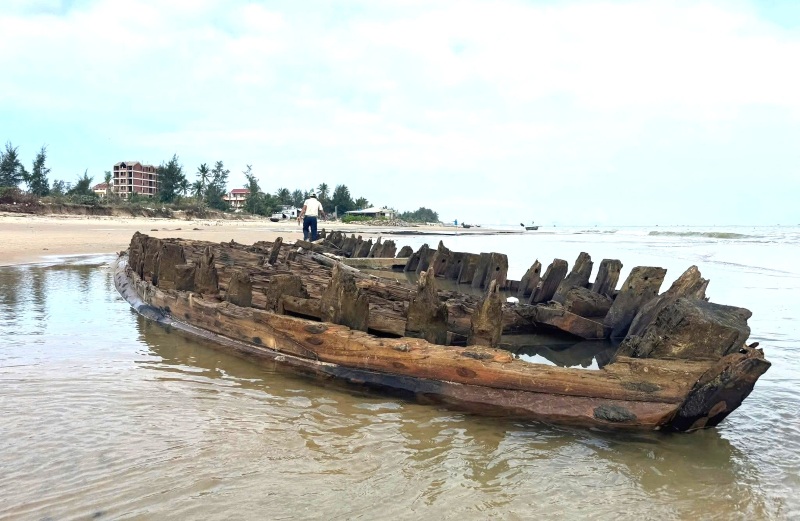
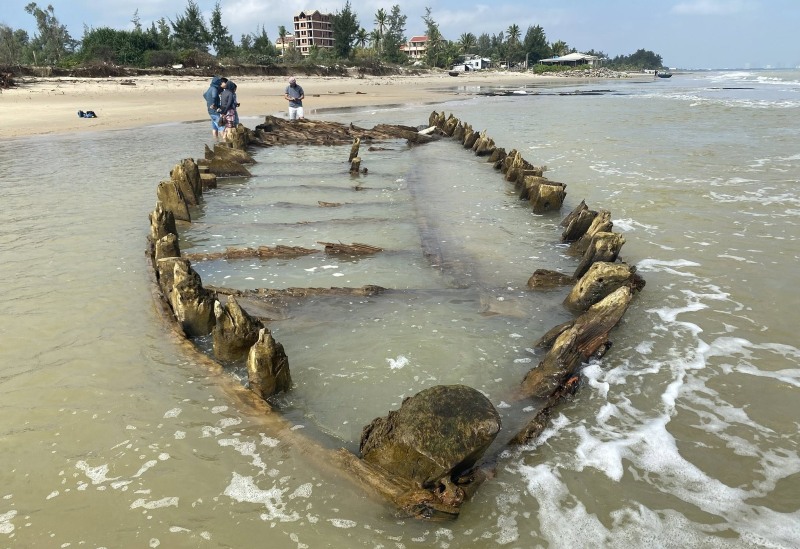
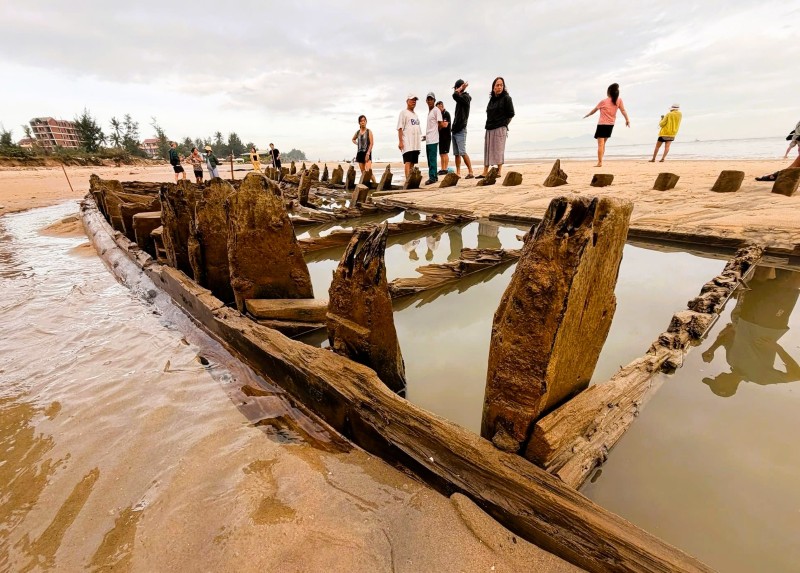
According to the Center's report, the relic of a sunken ship in the coastal area of Thinh My was first discovered at the end of 2023 and was agreed upon by the People's Committee of Quang Nam province (old) in Official Dispatch No. 1037/UBND-KGVX dated February 7, 2024.
In 2024, the Hoi An Cultural Heritage Conservation Management Center (now the Hoi An World Cultural Heritage Conservation Center) coordinated with the University of Social Sciences and Humanities - Ho Chi Minh City National University and the Quang Nam Provincial Museum (now the Da Nang Museum) to conduct a survey and sample assessment.
The results showed that the ship was large in size, with a sturdy structure, made of precious wood, with high durability such as lentils (ore oil), Kien Kien and pine, using traditional abrasive to prevent water seepage. This structure allows ships to conduct long sea journeys, serving trade at sea or in sea.
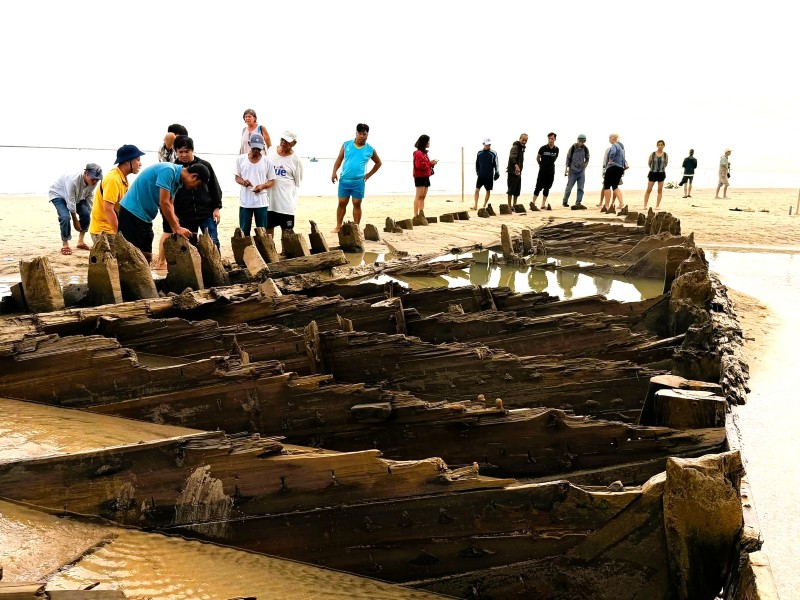
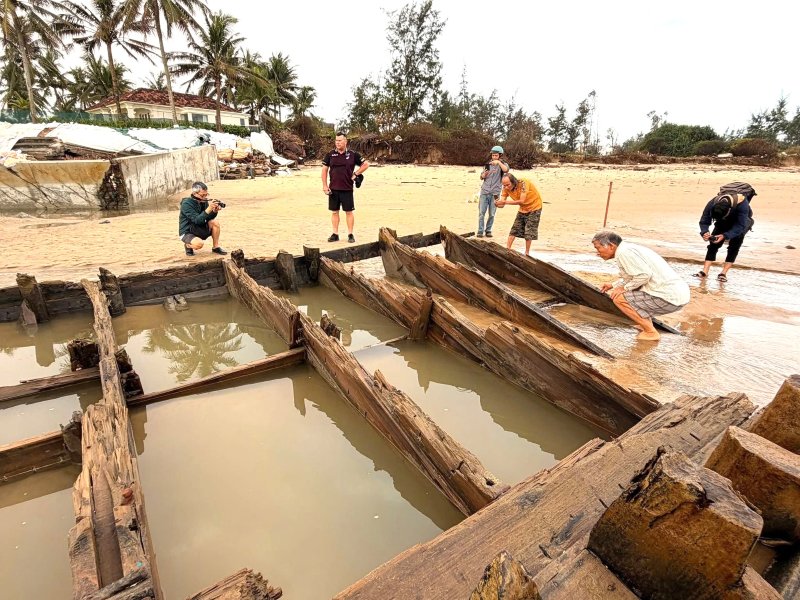
Although the aging results using the carbon C14 method have not been completed, through technical characteristics, shape and materials, experts say the ship is dated from the mid to late 14th - 16th centuries, at the same time as the traditional East Sea-style merchant ships discovered in Southeast Asia.
After being first discovered in late 2023, the ship was completely buried under the sea sand. However, the recent heavy rains and floods caused by storm No. 12 (storm Fengshen) caused serious landslides, causing the boat's body to rise more clearly.
The Hoi An World Cultural Heritage Conservation Center once again surveyed and measured the current status: the bulk of the ship was revealed to be more than 5m wide and 17.4m long, but a large part was still buried deep under the sand. Many technical details such as beam boards, bridges, partitions, train lots... are still clear.
Due to the impact of tides, this area is often covered and then re-exposed, making conservation work difficult.
Proposal for urgent excavation to save "protection" from damage
In response to the above developments, the Center has implemented temporary protection measures, such as placing warning signs, coordinating with local people to look after the scene, and at the same time requesting the People's Committee of Hoi An Tay Ward to coordinate in propagating and mobilizing people and tourists not to encroach on the relic area.
Mr. Pham Phu Ngoc said: "The serious landslides and the impact of the weather put the relic at risk of severe damage if not preserved promptly. We have proposed organizing an emergency excavation to protect the safety of the current situation, while collecting and studying the value of the ship".
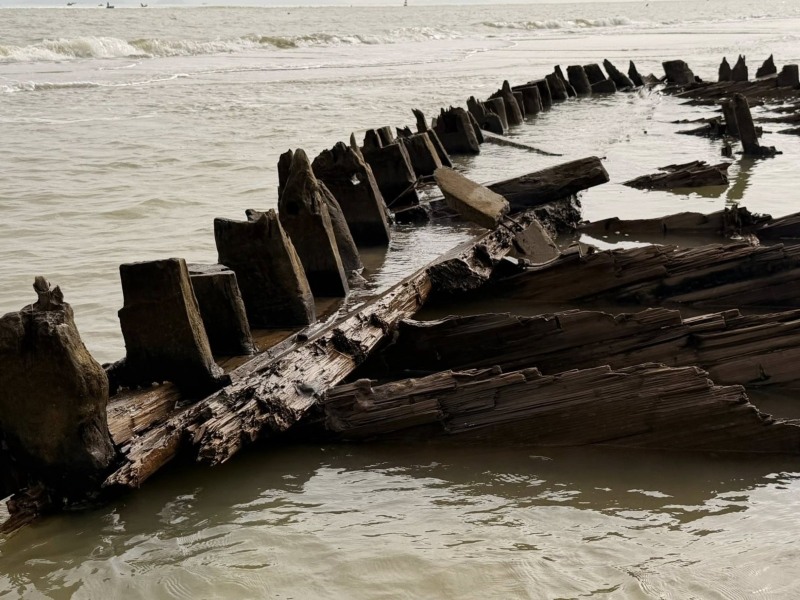

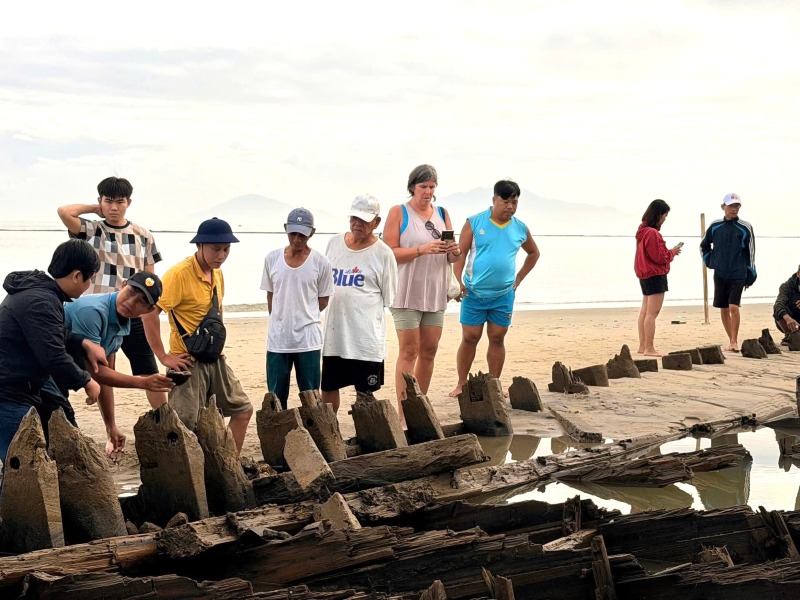
Experts assess that if excavated, this will be one of the most important underwater archaeological discoveries in Vietnam in recent years, contributing to clarifying the history of international trade of Hoi An port and the Central Coast in the Middle Ages.
The ancient ship in Hoi An is not only a rare relic, but also a reserve of Vietnams maritime history, demonstrating Hoi Ans important role on the Southeast Asian trade map for many centuries - Mr. Ngoc affirmed.











